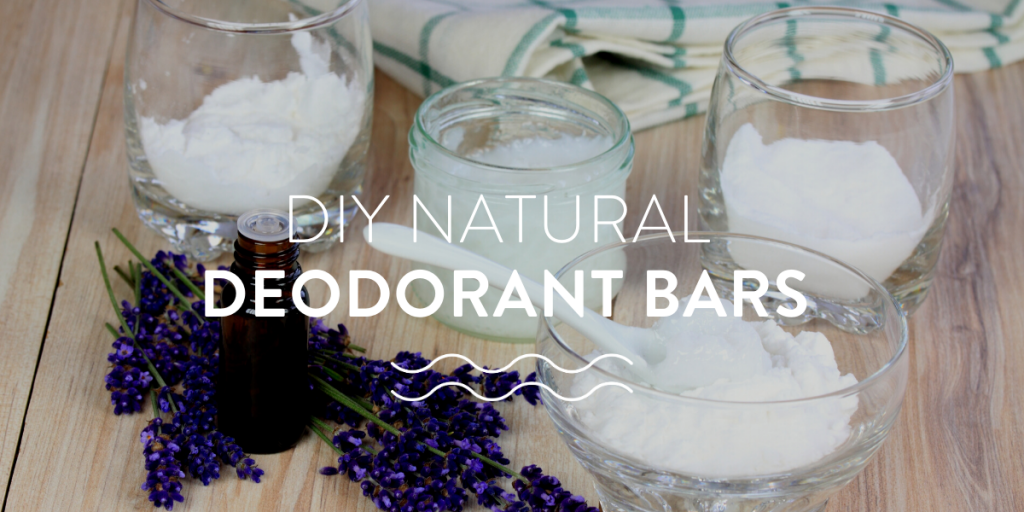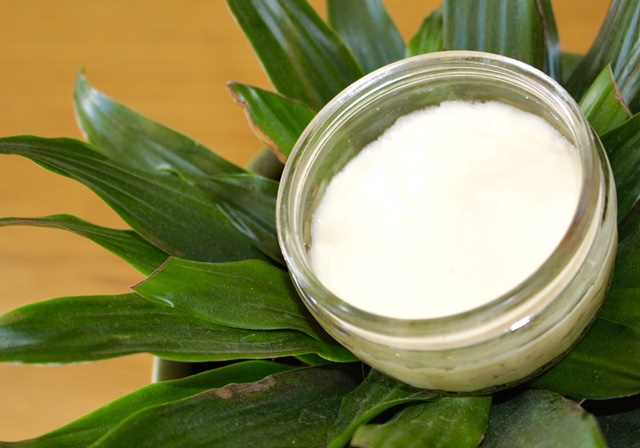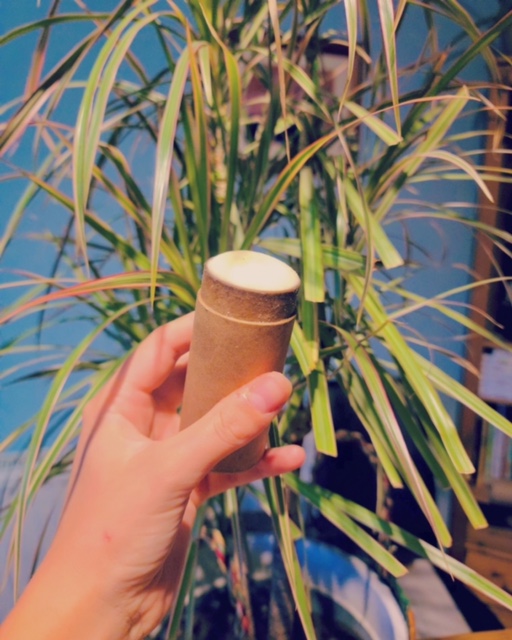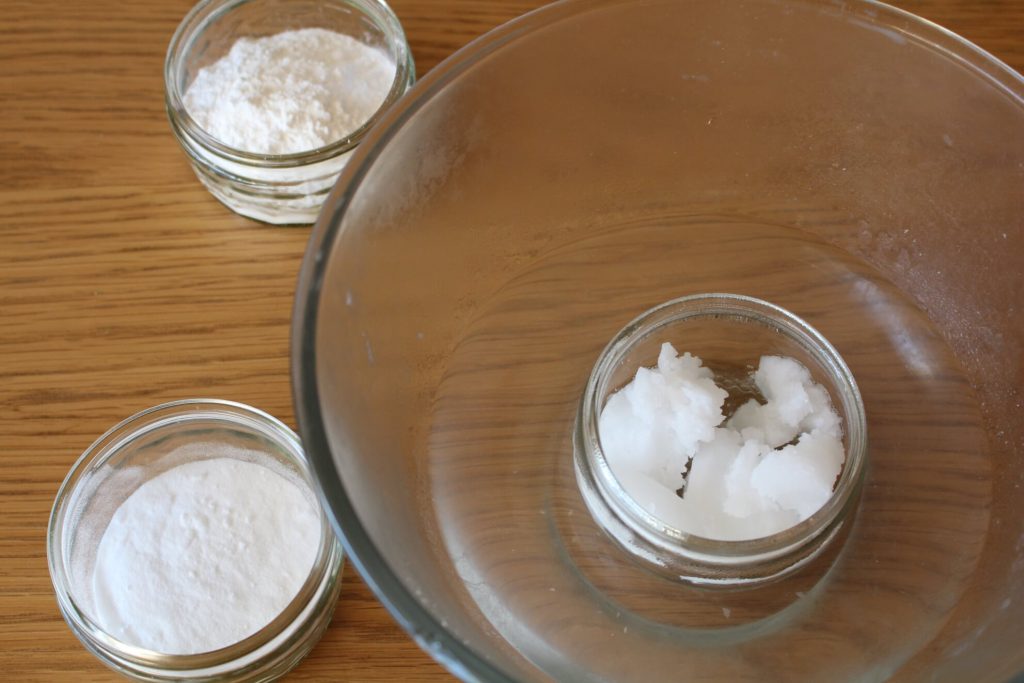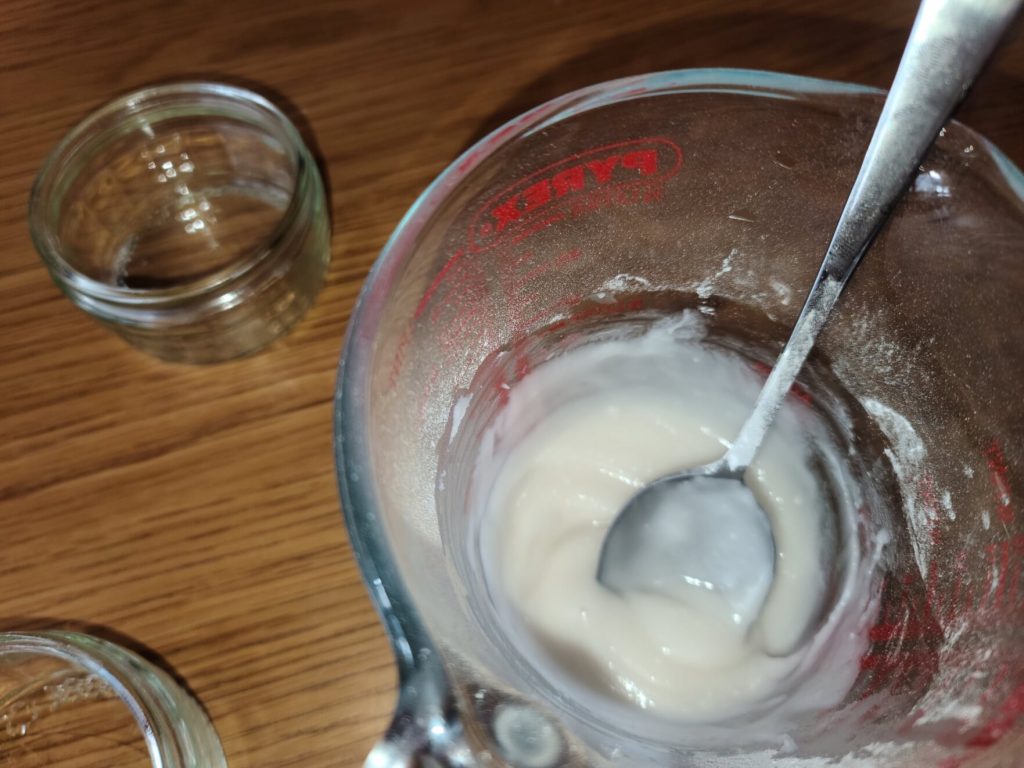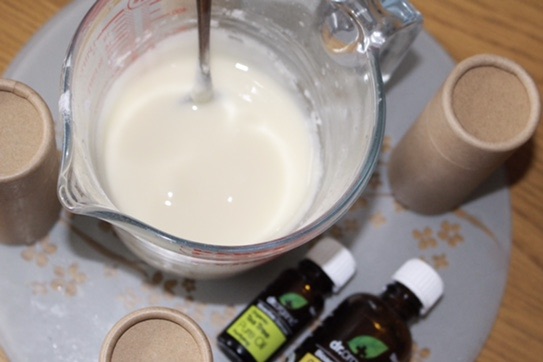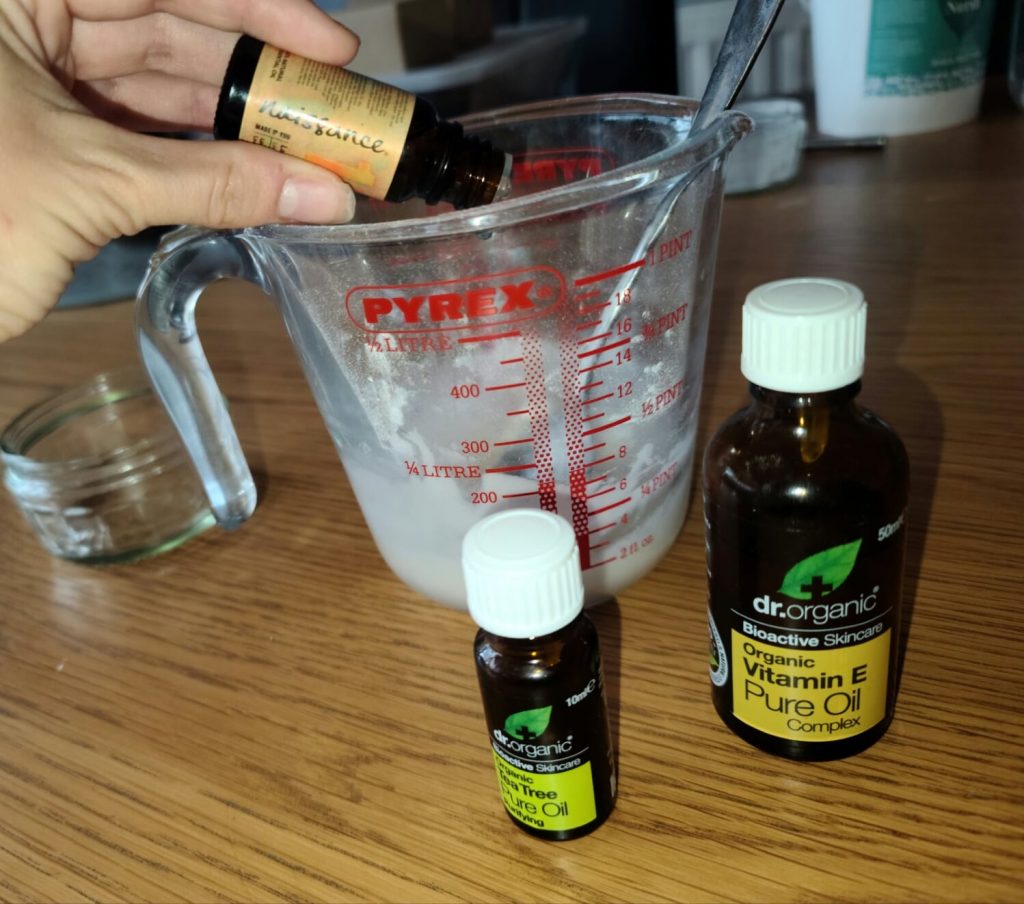Are you trying to make more sustainable choices? If so, it may be time for you to make the switch to a natural deodorant. Be kind to yourself and the environment with this plastic free, eco swap!
Our ambassador Emily has made the switch to naturals and has also started making her own natural deodorant products. Read on for her take on things to avoid in mass-produced deodorants and some of the benefits of a more natural deodorant. She has also kindly included 2 tried and tested deodorant recipes for you to make at home!
Now, over to Emily …

Sweating happens, but smelliness doesn’t need to! Mass-produced deodorants are formulated to stop body odour and sweat, but the ingredients can be harmful. They can even make your pits worse over time and disturb your natural underarm microbiome and pH.
How do deodorants / antiperspirants work?
Deodorants help to prevent body odour by minimising bad-smelling bacteria that hangout in our warm underarms. These bacteria effectively eat fats and proteins in your sweat, the product of their snacking is what causes bad BO.
An antiperspirant works to prevent sweating by blocking the pores on the outer layer of your underarm skin. Aluminium salts are included to plug sweat glands. This makes it more difficult for sweat to surface and reduces the amount of moisture for pit bacteria to chow down on.
Most store-bought pit sticks and sprays are deodorant-antiperspirant combos. While double fighting power against bacteria appears ideal, these products alter your skin’s physiology and natural range of biota. Just like your gut, there is a natural level of good bacteria that reside in the armpit. Commercial deodorants kill bacteria indiscriminately and can negatively influence a healthy underarm microbiome.
5 ingredients to avoid in deodorants
- Triclosan: is used to kill bacteria. Classified as a pesticide by the FDA (US Food & Drug Administration) and a probable carcinogen by the EPA (Environmental Protection Agency) triclosan is linked to antibiotic resistance, skin irritation, hormone disruption and thyroid issues.
- Propylene glycol: the active ingredient in antifreeze, is used to soften products. Metabolized in the liver, it can cause damage to the heart and central nervous system.
- Synthetic fragrances: regulations do not require the listing of individual fragrance ingredients. The words ‘fragrance’, ‘parfum’, or ‘aroma blend’ can mask hundreds of chemicals, which may be potential carcinogens, allergens or pollutants.
- Phthalates: a group of chemicals used as plasticisers to make personal care products less brittle. They are linked to altered reproductive development, higher risk of birth defects and male fertility issues.
- Aluminium: in antiperspirants aluminium salts are linked to accumulation of the metal in breast tissue and breast cancer. It may be an even greater concern to people with reduced kidney functioning, as too much in the body can cause bone diseases or dementia.
Read: Chemicals in Cosmetics Impact Us and The Environment for more information on what to look out for and avoid in the products we buy!
Deodorant ingredients that compliment your natural chemistry
Synthetic and artificial ingredients are easy to switch out for a deodorant that favours building a better pit microbiome. Use natural ingredients with antimicrobial and antifungal properties which prevent odour-causing bacteria from growing, such as coconut oil and tea tree oil.
Some recommended natural deodorant ingredients:
- Coconut oil: contains fatty acids that inhibit the growth of harmful microorganisms.
- Tea tree: has strong antimicrobial properties thanks to its main component, terpinen-4-ol.
- Bicarbonate of soda and arrowroot, or corn-starch: are naturally absorbent ingredients which combat moisture and reduce the food source of sweat-loving, BO-causing microbiota.
- Essential oils: comprised of a carrier oil and plant components. Infused-oils like lavender, sandalwood and bergamot provide a powerfully pleasant scent and are one hundred percent natural.
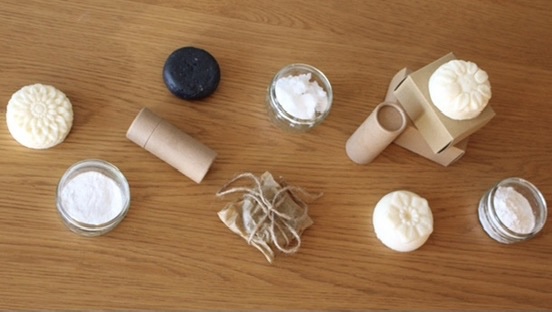
The benefits of DIY & natural deodorants
You decide what concoction to create for your skin’s needs and health – no more generic, mass-produced formula! For instance, if your underarm skin is sensitive, use less bicarbonate of soda or substitute it out completely. Dry, irritated skin also benefits from the addition of more moisturising ingredients such as shea butter and vitamin E oil.
Don’t sweat it! Sweating shouldn’t be demonised. It’s a natural process which aids in the detoxification of our bodies. Sweating through exercise releases excess salt and minerals which would otherwise accumulate in and overwork the kidneys. Perspiring is our body’s basic response to overheating, the evaporation of sweat from the skin maintains cool body temperature and homeostasis. Over time, with the continuous use of natural alternatives, you will begin to sweat less as your body resumes its normal regulation of the sweating process.
No stains or white marks! Great news, as this means not having to put any clothing in the wash prematurely because of a white mark or an underarm stain.
2 recipes for you to try yourselves
Natural deodorant bar – Normal skin
Ingredients
5 tbsp softened coconut oil
4 tbsp organic arrowroot powder
1 ½ tbsp bicarbonate of soda
Single drop of tea tree oil
Up to 12 drops of your choice of essential oil(s) – OPTIONAL
Method
- Soften coconut oil by heating in a water bath if necessary
- Combine the oil, arrowroot and bicarb of soda and mix thoroughly.
- Add in the tea tree oil.
- Mix in an essential oil or oil blend – OPTIONAL
- Pour mixture into a container for storage.
Step 1 Step 2 Step 5
Natural deodorant bar – Sensitive skin
Sensitive or rash-prone underarms may benefit from the addition of a moisturising butter. This recipe uses organic, unrefined shea butter and organic vitamin E oil to create a soothing deodorant.
Ingredients
2 ½ tbsp coconut oil
4 tbsp arrowroot
2 ½ shea butter
1 ½ tbsp bicarb of soda
Single of drop tea tree oil
1 drop vitamin E oil
Up to 12 drops of essential oil(s) – OPTIONAL
Method
- Warm the coconut oil and shea butter in a water bath until they have just melted.
- Combine the melted oil & shea butter with the bicarb of soda and arrowroot and stir well
- Add in the tea tree oil an vitamin E oil
- Mix in drops of essential oil or oil blend – OPTIONAL
- Pour mixture into a container for storage
Step 1 Step 2 Step 3 & 4
The finished deodorants may take several hours to completely harden, but this process can be sped up by placing in the fridge.
Store your deodorant in a cool, dry place. If you live in a cold climate, the deodorant will be a solid. When using a glass container, scoop a small amount using a finger or spoon and the oil mixture will melt upon contact with your warm underarms.
Please let us know if you have any questions and share any feedback if you try either of these recipes.
Emily Jupp is a Marine Biologist and PADI scuba instructor from the UK. Passionate about living sustainably, keeping plastic free and caring for coral reefs. Follow her story @green.conch and Greenconch.co.uk


